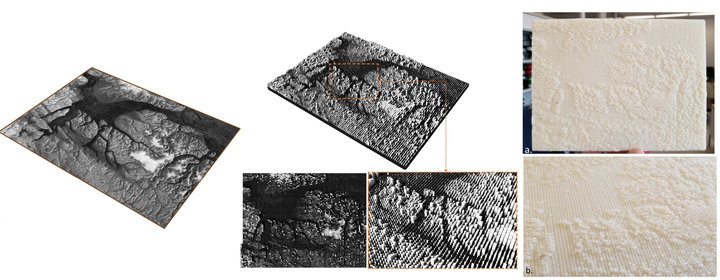First Insights Into INTUIT: An INteractive Tactile Physicalization for User Interpretation of RADAR Technology

Abstract
The changing climate and increasingly unpredictable sea ice conditions have created life-threatening risks for Inuit, the residents of the Arctic, who depend on the ice for transportation and livelihood. In response, they are turning to technology (e.g., RADAR imagery from the Canadian RADARSAT satellite) to augment their traditional knowledge of the ice and to map potential hazards. The difficulty lies in the actual RADAR interpretation process. In order to support understanding of the RADAR image content, we introduce a work-in-progress (WIP), INTUIT, a physicalization that represents the RADAR reflection strength, which is highly influenced by surface roughness, as a tactile texture. Such tactile texture is made by resampling the RADAR imagery to a number of UV cells and mapping the average brightness value of each cell to a physical variable. A proof of concept was designed for a region in Baffin Island (Nunavut) and sent to the Arctic for initial feedback. Preliminary study results are promising: it is expected that INTUIT will facilitate the interpretation learning process for RADAR imagery.